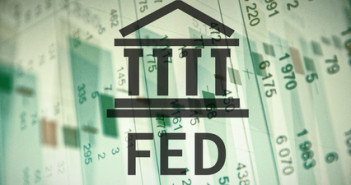The Fed’s two-day monetary policy meeting concluded last week with the US dollar briefly rising as a result. The meeting was largely a non-event as the Fed did not waver too far from the market expectations.
As expected, the central bank will be starting its balance sheet operations from October but in a somewhat surprise, signaled its willingness to hike interest rates one more time. This was a bit of a surprise as the markets were slowing scaling out the odds of a rate hike this year, largely due to sluggish inflation.
Here are five key takeaways from the Fed’s September meeting.
1. Fed to shrink the assets amassed during the crisis-era
The main point that stood out was that the central bank announcing that it will start the balance sheet unwinding from October. Initially, the Fed will be starting with $10 billion of assets, made up of $6 billion in Treasuries and $4 billion in Mortgage-backed-securities (MBS).
The Fed Chair, Janet Yellen justified the move stating that “stimulus was no longer needed†and called the Fed’s QE operations to be a success. Indeed, job creation was one of the biggest achievements for the Fed, although inflation and economic growth remain somewhat sluggish.
The Fed plans to unwind the balance sheet by not re-investing the proceeds once the Treasuries and MBS’s mature. So far, the Fed’s balance sheet stands at $4.23 trillion made up of $2.46 trillion in MBS and $1.77 trillion in Treasuries.
By choosing not to roll over the assets, the Fed will be avoiding a supply glut which could push bond prices higher.
2. Fed dismisses weak inflation
Inflation has been the biggest mystery for the Fed this year. After headline consumer prices briefly rose to 1.9%, inflation has been on a downward trend since then. This has led the markets to scale back the odds of a rate hike in the fourth quarter.
However, the Fed Chair sounded confident, noting that the recent weakness in inflation was unrelated to economic conditions. She reiterated that inflation expectations remain anchored at 2%. The 5y/5y break event inflation rate which gives a view on inflation expectations over the next five years remained at 1.8%.
Despite sounding optimistic, the Fed chair acknowledged that inflation target was missed this year, subtly noting that monetary policy could be recalibrated if weakness in inflation persisted.
3. Hurricanes Irma, Harvey, and Maria to have short-term impact
The Fed also noted that the hurricanes that devastated some parts of the US could have a short-term economic impact. However, the Fed cited that having dealt with similar conditions in the past, it was confident that the impact from the hurricanes was only short term.
Ms. Yellen also pointed out that the impact of the hurricanes could push inflation higher in the short term which could bode well for the Fed as it hopes to hike rates one more time.
4. Interest rates could rise by 25bps in December
The market expectations for interest rate hikes were seen rising following the Fed maintaining that it was looking to hike interest rates by another quarter point in December.
The Fed’s short-term interest rates are in the rage of 1% – 1.25% currently and this range could rise to 1.25% – 1.50%. One more rate hike is penciled in for March 2018.
5. Fed’s composition could change next year
However, a lot remains on the composition of the Federal Reserve. Ms. Yellen’s term as the Fed chair comes to an end in February next year. This comes alongside some vacancies on the FOMC board as well.
The US President Trump who is in favor of a more accommodative monetary policy will likely have a chance to nominate candidates that align to his views on monetary policy.
This will be a key factor especially as the Fed will move into rate hikes next year. For the markets, which are always forward-looking, this will be an interesting period as a potential change of guard at the Federal Reserve could mean uncertainty on the central bank’s monetary policy.



